Reply To:
Name - Reply Comment
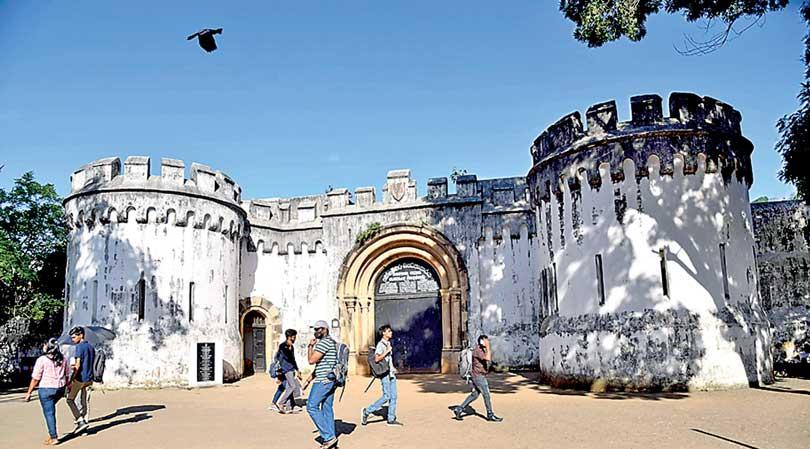 Bogambara Prison has been designated as an archaeological monument
Bogambara Prison has been designated as an archaeological monument
PIC By Samantha Perera
 It was recently reported that the Urban Development Authority has taken steps to demolish the ancient buildings of the Bogambara Prison, which has been designated as an archaeological monument as well as a world heritage site. Anyone can see it when entering the Bogambara prison grounds. The Urban Development Authority maintains that permission has been received from the Department of Archeology to demolish these buildings, which critics point out is an extremely important cultural and architectural heritage.
It was recently reported that the Urban Development Authority has taken steps to demolish the ancient buildings of the Bogambara Prison, which has been designated as an archaeological monument as well as a world heritage site. Anyone can see it when entering the Bogambara prison grounds. The Urban Development Authority maintains that permission has been received from the Department of Archeology to demolish these buildings, which critics point out is an extremely important cultural and architectural heritage.
As a result, the Department of Archeology has given permission to the Urban Development Authority to demolish the ancient original wall behind Bogambara Prison and build a gate. In addition, the building where bandit Saradiel was imprisoned, the old buildings of archaeological value- where industries for the prisoners were located- have been completely demolished. The main building where the prison cells were located has also not been spared. The prison hospital building is currently being renovated to be turned into a hotel. The archeologically valuable wall on both sides of the main entrance and the adjacent guardhouses are now used as a drink and water store as well as an outdoor area. They are also used as rest rooms for park employees.
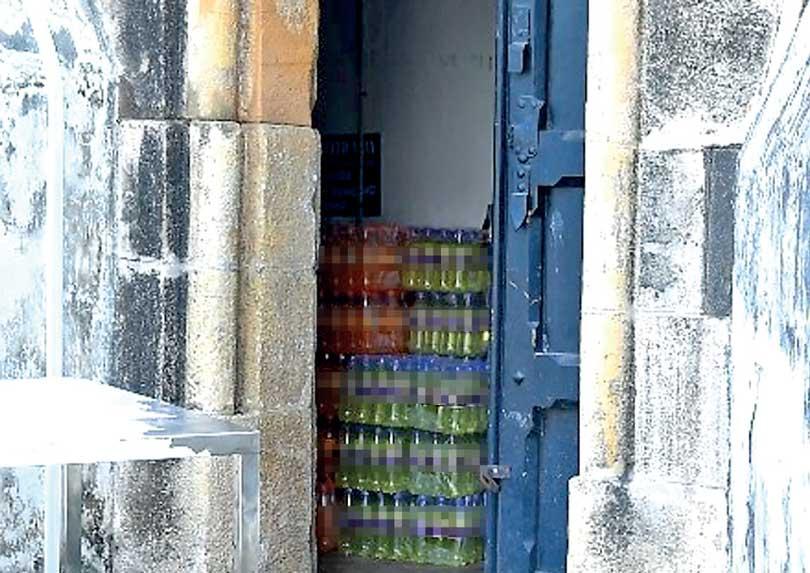
The archeologically valuable wall on both sides of the main entrance and the adjacent guardhouses are now used as a drink and water store
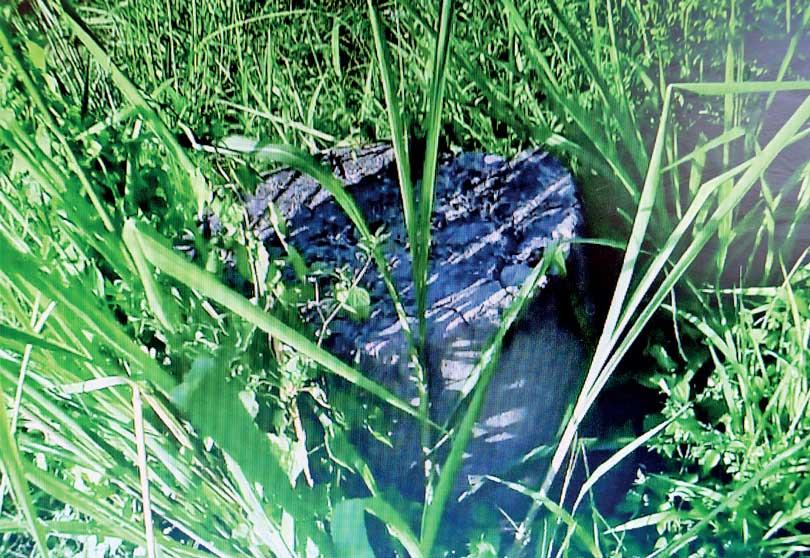
The sorry state of a monument made to remember Ehelepola Kumarihami found at the Bogambara Prison grounds
The doctor who has obtained signed lease documents confirmed to this newspaper that he had received permission to turn part of the prison leased out to him into an outdoor garden and that includes the prison guard room as well. The doctor has obtained permission for this outdoor garden through the tender system followed by the Urban Development Authority on the basis of paying a monthly rental of two hundred thousand rupees. The urban development authority administrates only the part of the premises where the prison cells are located. According to the tender, the part where the wall and guard cells are located belongs to the outdoor garden area. Accordingly, the doctor told this newspaper that the cells will be used. The prison site is rated as having world heritage archaeological value. This is how it is being destroyed at present.
The 148-year-old three-storied Bogambara Jail -built during British rule- is the longest building in Asia built on a single foundation. The financial value of these buildings and land spread over an area of nearly 11 acres located on Ahelepola Kumarihami Mawatha in Kandy city limits, overlooking Kandy Lake, Wales Park, Young Buddhist Association, Kandy City Center (KCC) and Public Library, was calculated only in the year 2021. This was done at the Kandy development committee meeting with the participation of government politicians. At that time, the Department of Archeology had mentioned facts regarding the ancient value of the Bogambara Prison building. It has also been learned that some politicians, who represented the Development Committee at that time, had dismissed the statement made by the Department of Archeology with disdain.
Master key
The Bogambara Jail was built on the instructions of the British Government by the Inspector General of Prisons and Police and the country’s first Commissioner of Prisons and Police N. R. By Saunders. It was in the year 1876. According to reports, the Bogambara Prison was designed using the similar architectural designs of the Bastille Prison, which was the origin of an important historical battle in France. There are guardhouses at the four corners of the prison camp. This magnificent building is five hundred and fifty-six feet long, one hundred and forty-four feet wide, and one hundred and two feet high and built on the same foundation. The jail consists of three floors and three hundred and twenty eight cells. The construction work was carried out by the Government Works Department. It is also interesting to note that all 328 cells inside the prison can be opened with the same key that opens the main gate. Although the main door that leads you to the prison camp is 8 feet high, the door is made in such a way that one has to lower the head to enter the prison. It is mentioned in the old reports that the door was structured for people to bend their heads while entering to remind them that they were all bound by the Queen’s Law. Similarly, the place where the remains of Ehelepola Kumarihami-who was drowned in the Bogambara Lake- is said to be found at the Bogambara Prison grounds.
In the year 2013, Bogambara Prison was vacated 138 years after it was constructed. The prisoners were transferred to the newly built Pallekele Prison. The purpose was to turn the Bogambara Prison camp site into a cultural park. On January 01, 2014, the prison was completely closed for construction work to facilitate the plan for the planned cultural park. All the goods at this prison were handed over to the Sri Lankan Government. In October 2014, the government handed over the right to maintain this building and land of historical value to the Urban Development Authority. Officials of the Urban Development Authority confirmed with this writer that the control was under the Gangawata Divisional Secretariat, but at present all activities are controlled by the Urban Development Authority.
The Good Governance Government in 2016 also received cabinet approval to maintain this development project; which commenced in 2014 when Gotabaya Rajapaksa was the Defense Secretary. According to that plan, the maintenance and investment promotion work of Bogambara Prison was assigned to the Board of Investment. At that time, the Urban Development Authority had prepared all the planning projects and maintenance reports pertaining to this land. The architects employed by the Ministry of National Policy and Economic Affairs prepared the basic plans for the development of the land. There was a plan to complete the development in three phases. It was proposed to set up the 1.5 acre area outside the prison wall or the front yard as a venue for cultural performances. Accordingly, there was a tourist information centre where souvenirs and other local products were displayed and sold. Under this project, a public courtyard reserved for public entertainment was also established and completed. The bungalow was completed by Central Engineering Pvt. Ltd. at a cost of two hundred and ninety-seven million rupees under the general treasury allocation. The hospital premises at this site were renovated and a hotel was built. It was proposed to construct two buildings as two five star hotels in the former part of the premises. For this task seven hundred and fifty million rupees was approved by the treasury during the period of the good governance regime.
The first phase of the work was planned to be completed on August 24, 2019. This construction work in the prison premises was to be carried out in keeping with the law of the country. It was done under the full supervision of the Department of Archeology. Orders were also given to ensure that no ancient constructions are damaged. The President and Prime Minister of the good governance regime were informed by the chief prelates of the Malwathu and Asgiri Chapters that since it is a valuable land, no building or wall should be damaged during the construction work and the pride of Kandy as a world heritage city should not be tarnished.
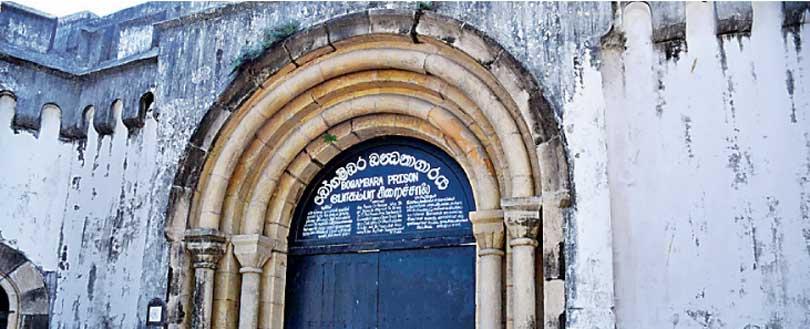
The 148-year-old three-storied Bogambara Prison is the longest building in Asia built on a single foundation
Future generations deprived of seeing original prison
But as a result of the intervention of some politicians, who were decision makers in Kandy during President Gotabaya Rajapaksa’s government, the world heritage archeological buildings of Bogambara prison are being demolished without giving any thought to the damage that’s being done.
Either these officials should amend the Antiquities Ordinance if they wish to destroy a building named as a World Heritage archaeological site. Otherwise, this building should be removed from the gazetted list of archaeological protected monuments. It is a pity that witnessing this world heritage site in its initial condition is now denied to future generations.
 There were programmes where grated coconut was used to manufacture oil which in turn was used to make soap. Coconut oil was made. There were textile factories. Although they had old technology, clothes were sewn for the prisoners in that factory until the prison was closed in 2014
There were programmes where grated coconut was used to manufacture oil which in turn was used to make soap. Coconut oil was made. There were textile factories. Although they had old technology, clothes were sewn for the prisoners in that factory until the prison was closed in 2014
Tissa Jayasinghe Former Prison Commissioner
“There were archeological monuments in the prison grounds and we protected them”- Former Commissioner of Prisons
This newspaper spoke to former Prison Commissioner Tissa Jayasinghe, who was in charge of Bogambara Prison.
“The prison was located on a land of about 12 acres. The oldest building in the prison land- where the main cells were- was built in 1876. It was built in the shape of the queen’s crown. In addition, there was a barrack where Ja people (people from Malay origin) lived. That building is also one of the oldest. It was in that building that Saradiel was detained. Besides that, the Bogambara Prison hospital and the official residence of the Commissioner General were built at the same time.
“In addition, there were three gallows and also an old apparatus. It has been removed as of now. There was a church and a temple. They were demolished too. They tried to remove the Buddha statue and the bodhi tree, situated near the gallows. We opposed that move then, hence it is protected today. Also there were programmes where grated coconut was used to manufacture oil which in turn was used to make soap. Coconut oil was made. There were textile factories. Although they had old technology, clothes were sewn for the prisoners in that factory until the prison was closed in 2014. At present, not only the machinery but also the building is gone. Also, there were industries that produced buckets and cardboard. At present there are no buildings.
“Bogambara Prison is like a village. Inside this village there were wood cutting machines which operated in various ways. Wood was cut to size and polished; all with the use of a single motor. A prison of this nature could have been turned into a museum or a hotel protecting the antiquity. But these people have destroyed that antiquity. There are plans to build an outdoor theatre,” said Jayasinghe.
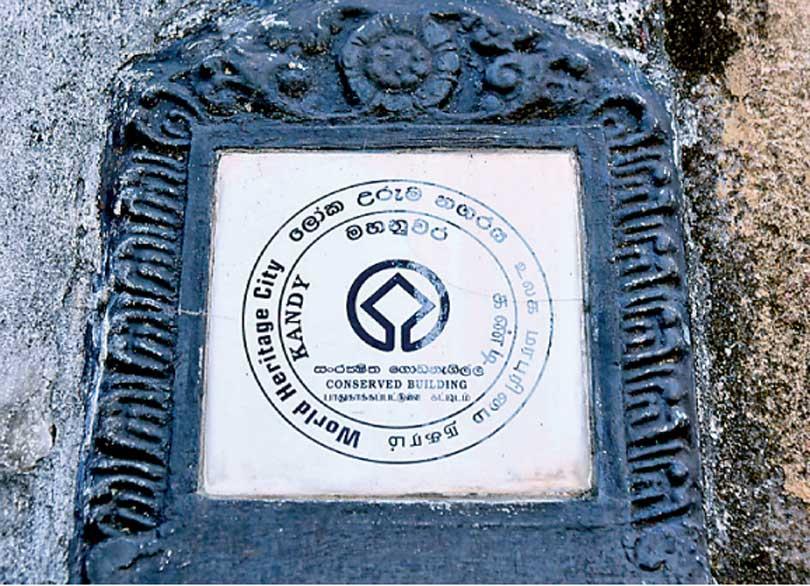
Bogambara prison is named as a world heritage archeological building
“Buildings were removed with written permission from Archaeology Department”- Kandy Urban Development Authority
When this newspaper contacted Nilantha Paranagama, the officer in charge of the Bogambara Prison grounds at the Kandy office of the Urban Development Authority, to find out who gave permission to destroy the buildings on the Bogambara prison grounds, he had this to say. “A huge development project is taking place inside the prison grounds,” Paranagama said adding that all the buildings and the wall were demolished with the knowledge of the Department of Archaeology. “Orders have been given to us to freely act. We did not establish any liquor stores inside the World Heritage Site. We did not damage them. We did all what we did with the approval of the Archaeology Department,” said Paranagama.

Orders have been given to us to freely act. We did not establish any liquor stores inside the World Heritage Site. We did not damage them. We did all what we did with the approval of the Archaeology Department
Nilantha Paranagama Officer in Charge Bogambara Prison grounds
“The prime minister and the governor said to demolish the buildings”- Kandy Archeology Department
This newspaper also asked Bandula Dissanayake, Assistant Director of the Department of Archeology’s Kandy office, why they decided to destroy a place of such ancient value.
“The development work of the Bogambara Prison site hasn’t damaged any archeological buildings. The archeological buildings such as the main prison cell, the prison hospital, Saradiel City Ward and the factory are still there today. Not a single place has been destroyed. The prison site is now owned by the Urban Development Authority,” said Dissanayake. He added that a small part spanning 15-20 feet of the old wall had been broken in the back of the old wall; which had been done with the permission of the Department of Archeology.
Though Dissanayake maintained that no buildings inside the prison were destroyed we witnessed the destruction. Plans are being made to build a hospital and an hotel. But the Department of Archeology does not want to accept the destruction. Dissanayake affirmed that the Bogambara Prison site has archaeological value, but it now belongs to the Urban Development Authority. “We go inside with their permission. I don’t remember a time when I visited the Bogambara Prison site. We’ll send someone inside the prison to see whether any demolition work as been carried out inside the building site. Also, if the Urban Development Authority does things as they wish we will take legal action. The Archeology Department did not make a request to demolish those buildings. I did not decide to destroy the buildings inside the Bogambara Prison land. That was the decision taken by the Prime Minister and the Governor,” said Dissanayake.

I do not know if there are archaeological monuments inside the Bogambara Prison. I will find out and report back to your newspaper”
Lalith U. Gamage Governor
Central Province
“I don’t know if there are archaeological monuments inside the prison grounds,”- Lalith U. Gamage Governor Central Province
When we asked the Governor of Central Province Lalith U. Gamage regarding this issue, the Governor said, “I do not know if there are archaeological monuments inside the Bogambara Prison. I will find out and report back to your newspaper”.
This writer tried to contact the Director General of the Department of Archeology Prof. Anura Manatunga many times to find out about this issue (before he tendered his resignation), but there was no response. Similarly, despite several attempts to contact the Chairman of the Urban Development Authority, Mr. Dinesh Herath, the Chairman also did not produce a response.